

Marvel Comics Presents ran for 175 issues from 1988 until 1995. Each issue included four eight-page stories with typically two or three on-going features (and no ads). It spotlighted some of the leading creators of mainstream comics over a period of precipitous economic growth and even more rapid decline. Reading through it is an opportunity to revisit any number of weird aspects of 90s superhero comics. This blog is a primitive, oddly regimented, manifestly scattershot crawl through an often disappointing but occasionally splendid comic. All image copyrights are Marvel's. Issue credits linked below. Updated on Wednesdays.
Marvel Comics Presents #28: Late September 1989(4.1.20)
Credits: grandcomicsdatabase

Marc Silvestri with Joe Rubinstein handle the Havok duties with a fair measure of dynamism in the face of the persistent design problems. The rear cover is marked by what looks to be an "all hands approach"--e.g., a Black Panther that looks decidedly like a Mignola contribution. After a steady run of letters pages, this issue marks a return to a rear, interior cover preview.
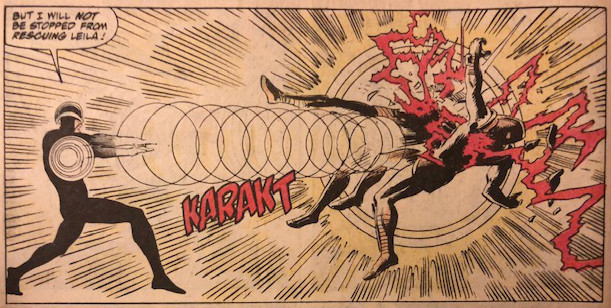
A. Havok, "Pharaoh's Legacy" [5/8]
After a strong improvement in the last installment, things plateau and subside quickly here. The entirety is devoted to a broadly gladiatorial match between Havok and Living Pharaoh cultist warriors with a peculiar reveal of Plasma at the end. Patterson's contributions remain critical, given the slack and rote Buckler layouts and plotting. At some junctures, Patterson injects genuine dimensionality and nuance into the lesser Summers brother, but there's so little to see, including remarkably sparse backgrounds, that Yanchus' coloring efforts yield erratic and vaguely jarring color fields. There's a clear feel that we're limping to a too-far-off finish line here.

B. Black Panther, "Panther's Quest" [16/25]
McGregor pushes this feature to dark, gut-wrenching levels here by dangling the prospect of T'Challa saving the tragically burned child only to have him pass on the final page. It's harrowing and sorrowful stuff that squares with the bleak political tenor of the feature and subverts the too familiar reversal of fortune from the previous issue. It proves genuinely affecting even while McGregor's exposition heavy and occasionally obscure gloss on the violence around T'Challa distracts. Colan's work here is raw with long painterly lines and shattered layouts that only coalesce and tighten as the action slows to its grim end. Rockwitz plays around with a color hold and some odder tones that fuel T'Challa's sense of desperation, but misfire occasionally.
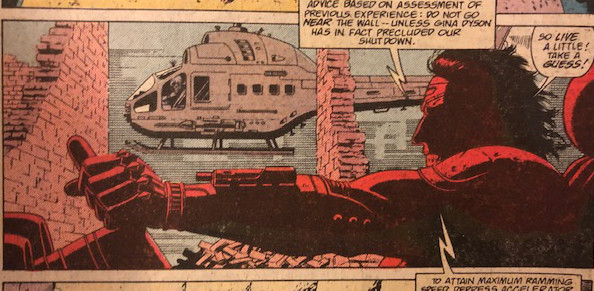
C. Coldblood, "Rise and Shine" (3/10)
Coldblood recovers some semblance of his human memory after dispatching a bevy of robot guards and we're introduced to Gina as a romantic object and a member of the team that created Coldblood. Given Gulacy's mastery of action sequences, things here feel fairly subdued and, given the focal attention on Gina, there's enough inconstancy and stiffness to sap the putative duress Coldblood should feel.
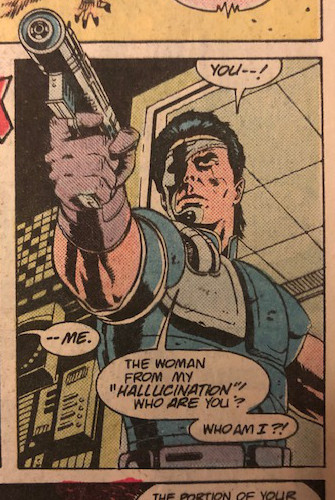
Moench's swiftly pushing through some well trod post-apocalyptic ground, though there's a fun touch of dialogue: when Coldblood asks after the recover of his brain, Gina informs him "the tissue has been flushed." Gulacy concludes with some boldly cinematic panels, ripped from something like Mad Max that owe much to Oliver's deft touch.
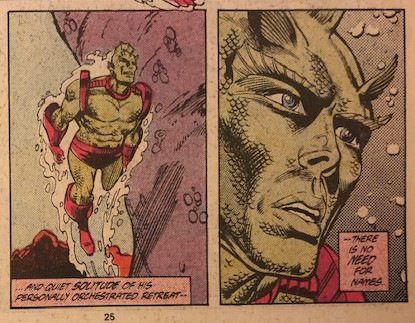
D. Triton, "Giving Peace a Chance"
Robert Campanella receives a writing credit for an exceptionally thinly plotted Triton piece. Triton fights a fish, is forced to kill it, and, in the final panel, we discover that it's the presumptive result of Roxxon toxic waste.
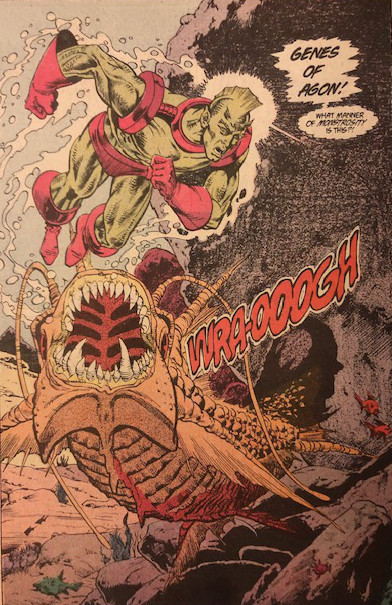
The clear emphasis here is Saltares and Marzan working through underwater action techniques, nicely handled by John Wilcox on colors, and laying down a variety of screentones and differing line weights. Everything looks quite good here and, were this a try out for a regular Namor gig, it's clear the art team passes muster.
Power Ranking: Black Panther (A-), Coldblood (B), Triton (B), Havok (C-)